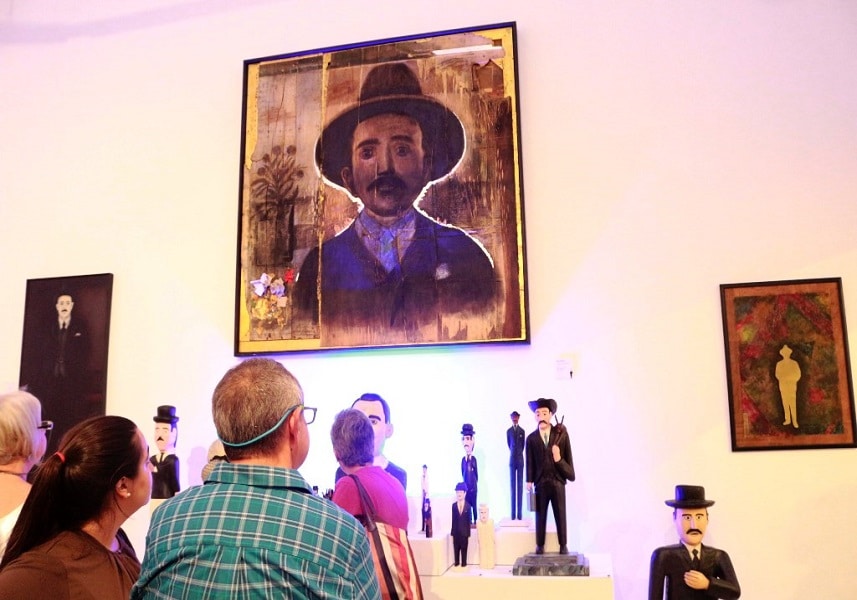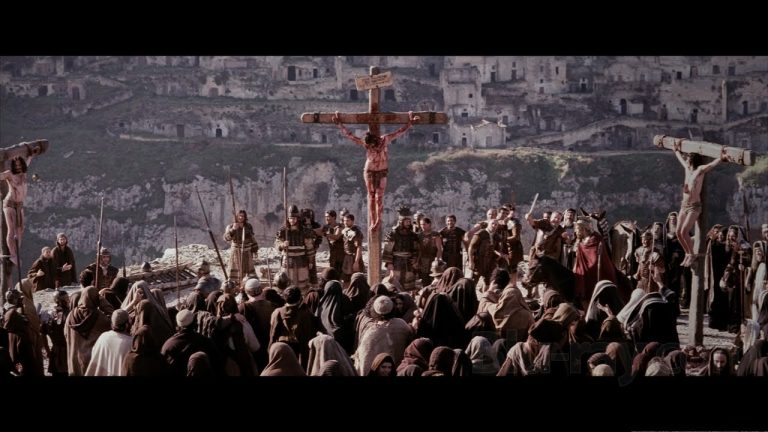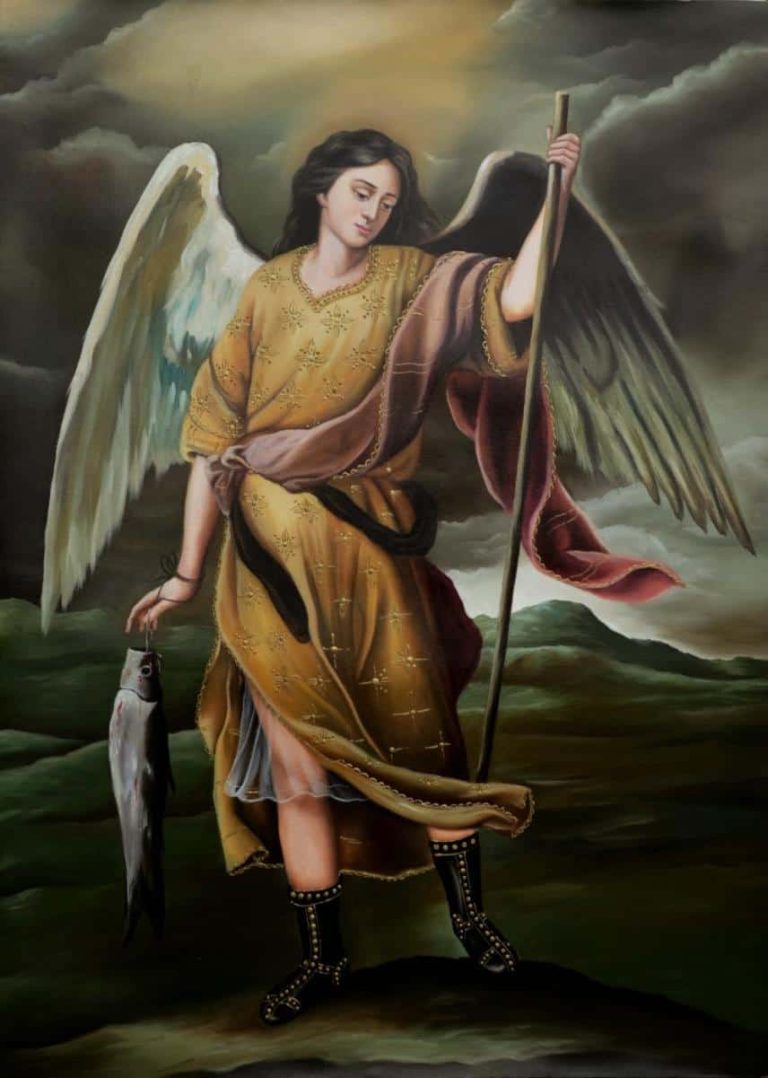Doctor José Gregorio Hernández, the Venerable and Blessed
José Gregorio Hernández , Venezuelan doctor, revered for his miracles according to popular belief. Known in life for his kindness and devotion to helping others. There was nothing that could make him happier than helping others feel good, it was his mission and he was able to achieve this and much more through his beloved medical career.
Biography
José Gregorio Hernández , physician, philanthropist, professor, brilliant scientist, and devout Catholic. He was raised in a Christian home and with a Catholic faith, so his devotion to the church is not surprising.
Better known as Dr. José Gregorio Hernández . Descendant by his mother from Cardinal Francisco Jiménez de Cisneros, and by his father, from the distant Santo Hermano Miguel, so we could say that the Catholic faith was even in his blood.
José Gregorio Hernández short biography : Born in Isnotú, Edo. Trujillo, on October 26, 1864. His parents were Benigno Hernández Manzaneda (owner of a grocery store and apothecary) and Josefa Antonia Cisneros (housewife). His mother, a very devout Catholic, died on August 28, 1811 when he was only eight years old, after giving birth to his little sister, who would bear the name of his mother.
His childhood was spent under the care of his aunt María Luisa Hernández Manzaneda, (who assumes the role of second mother) in his hometown, and of course, in a deeply religious environment. The example of his parents, plus his devotion to the Catholic Church, led him to become a humble man of heart and solidarity with everyone, but especially with those most in need.
In the parish of San Alejo de Boconó, the father of José Gregorio contracts a second marriage with Doña María Hercilia Escalona. From this union another six brothers of José Gregorio will be born.
He completed his primary studies in Trujillo and at thirteen (13) years of age he moved to Caracas. He was an outstanding and impeccable young man; He was assigned a chair of arithmetic for the lower grades and was appointed “discipline inspector” of the Villegas school.
Finally, he graduated with a Bachelor of Philosophy in 1884; He wanted to study law, but at the suggestion of his father he ended up studying medicine and finally finding his vocation. He graduated from the Central University as a Physician on June 28, 1888.
On July 31, José Gregorio gets a scholarship to go to the University of Paris. During his stay he managed to specialize in Microscopy, Pathology, Experimental Physiology and Normal Histology, in addition to perfecting some scientific techniques and helping his country (Venezuela) to modernize in the medical area.
Although the date of his arrival in the French capital is unknown, by 1889 Dr. José Gregorio Hernández was already studying in the histology laboratory of Mathias Duval, who was a professor of histology and anatomy at important Parisian universities.
On March 8, 1890, José Gregorio’s father, Don Benigno Hernández Manzaneda, died; Having fulfilled his commitments and family, he decided to return to his beloved Venezuela, not only fulfilling his word to help modernize and update others in the medical area, but also heeding God’s call, so he decided to direct his life and continue as well. his religious vocation.
While in Caracas (1909) he received permission to form part of the “Santa Rosa de Lima” Seminary. Later, he travels to Rome, but his heart has no greater desire than to live radically in a monastery.
Finally, he understands that he must not continue fighting against the current. He abandons religious life and accepts the Lord’s call to lead a secular life. He dedicated his life to those most in need, but without ever leaving medicine aside. Exemplary man. A Saint indeed.
Jose Gregory Hernandez
“A saint has died”, was what was heard among the people of Caracas on June 29, 1919. Without a doubt, a date that has never been and will never be forgotten, since Dr. José Gregorio Hernández had died run over by the vehicle of Fernando Bustamante.
The Life of Doctor José Gregorio Hernández is, without a doubt, an example to follow. There is no person or illustrious person from Trujillo who has been written about more in the Venezuelan medical world than José Gregorio Hernández. The virtues and holiness of him that revolved around his existence was won thanks to the fervor and devotion on the part of the popular fervor worldwide.
The life of Dr. José Gregorio Hernández has been remembered, illustrated and venerated by a large number of television programs, movies, radio. His work, miracles, figure of eminent Physician and holiness have been (and will continue to be) transmitted from generation to generation.
Nothing else can be said other than that he was an exceptional man and so devoted to his beliefs and love for his work that he gave his life to others. Of course, like any other human being he made mistakes, he had flaws and was the target of criticism, but this does not detract from all the recognition he has earned after a lifetime of service.
Some have felt so much fervor and faith towards it that they have ignored their human condition and have distorted history, they have even set aside their responsibility as writers to the point that many stories and false anecdotes have been written in his name, in order to gain recognition.
Assessment of your work
On March 19, 1890, Dr. Raimundo Andueza Palacios assumes the constitutional presidency, who asks José Gregorio to return before the end of his scholarships abroad, and to create the faculties of Histology, Pathology and Physiology.
It also provides him with the money to purchase a fully equipped laboratory, which is later established at the Central University.
In 1891, having returned to his country, he carried out a reform of medical studies. He reintroduces the Microscope in Venezuela, and inaugurates chairs in the subjects that he had the fortune to study in Europe. Also, he founded the Experimental Physiology Laboratory at the Central University of Venezuela, equipping it with the most advanced technology that existed at the time.
In 1893 José Gregorio attends the First Pan-American Medical Congress held in the city of Washington, where he presented an original work on: “red blood cells at different latitudes”. In said congress, the Chair of Bacteriology was decreed (founded by José Gregorio in 1891: the first that had been created in America.
In said congress he enjoyed the pleasant company of a great friend, Dr. Francisco Antonio Rísquez who attended as Official Delegate of Venezuela.
Some of his publications were:
In the magazine El Cojo Ilustrado: An article of his appears about the much loved and remembered by him, Doctor Nicanor Guardia, who was his professor and teacher.
In La Gaceta Médica de Caracas, we can also appreciate his work on “the number of red blood cells at different latitudes” and the notes of nine of his bacteriology classes, collected by his classmates, José A. Cuevas and José Cardozo, who they appeared in numbers 5, 6, 7, 9, 11, 14, and 18 of said publication.
In 1894 he published another work, this time, in the company of Dr. Nicanor Guardia and dedicated to the Medical Faculty of Madrid on “angina pectoris of a malarial nature”.
In 1902 he joined a group of doctors who would later lay the foundations to found the “National Academy of Medicine”, which was finally established in 1904 and was assigned a chair (number 28)
On December 11 of that same year, he decides to enlist in the army to defend his country, which was threatened by foreign powers.
On June 15, 1906, Dr. José Gregorio Hernández presented to the Minister of Public Instruction an application for retirement as a professor; On June 20, just five days later, this request is accepted by the executive power, assigning a pension by order of provisional President Juan Vicente Gómez.
Also, ten thousand bolivars (10,000 Bs) were provided to him to help with the costs of printing his work: “Elements of Bacteriology”. The publication of this was carried out in the Typography Herrera Irigoyen y Cía. From Caracas.
This is an unprecedented work in Latin America for what it meant a lot at the time, and even today it is of vital importance for the study of this science in American latitudes. Without a doubt, this work represents one of his most important and far-reaching contributions to the great legacy of the doctor and scientist José Gregorio Hernández.
On January 1, 1908, José Gregorio registers as a cooperator of the House of Poor Children, directed at that time by the priest Plácido José Fernández.
On January 3 of that same year, he received a letter from the Charterhouse of Farneta in which he was informed that they were waiting for him to enter as a novice, so on June 8 he left for Europe on a French steamer so that he could then take the habits in Italy. It is said that this was his first attempt to belong and embrace a religious life.
Finally, on July 16, 1908, he believes he has fulfilled his dream by entering the Charterhouse of Farneta (near Lucca, Italy) as an aspirant. On August 29 he is accepted into the novitiate of the Charterhouse of Farneta under the name of “Fray Marcelo”.
On April 21, 1909, he decided to return to Venezuela to enter the Metropolitan Seminary of Caracas, study theology and be ordained as a priest. Here is his second attempt to enter religious life, however, this new attempt is frustrated once again. On this occasion, he is forced to leave due to the great pressure exerted by the university sectors and returns to his chairs at the UCV.
On September 14 of that same year, Dr. José Gregorio is assigned as Professor of Anatomy and Practical Pathology (at the Vargas Hospital).
In June 1912, El Cojo Ilustrado published his vision of Art again, this time. This year, his important work also sees the light: “Elementos de Filosofía”, published this time by the publishing house “El Cojo”; This work had great relevance, and gave him great recognition as an author, for being one of the first Latin Americans to address the subject in written form.
This, without a doubt, was a super productive year, which is why he also published: “Elements of General Embryology. Prolegomena”
On July 1, 1913, José Gregorio left for Italy, with the intention of entering the Colegio Pio Latino in Rome. This was his third and last attempt to enter religious life.
In the period from February to August 1914, already fifty years old and due to health reasons, José Gregorio had no choice but to take a break and leave the Colegio Pio Latino. He goes to Genoa to treat a dry pleurisy, and from there, he seeks the opinions of other doctors: Milan and Paris, respectively.
As if this were not already serious and painful enough, in August of that same year the First World War broke out, for which he had to leave Paris earlier than he had planned.
On June 13, 1918, in an ordinary session of the National Academy of Medicine, he presented a work baptized as: “Preliminary note about the treatment of tuberculosis with chaulmoogra oil”.
At the age of fifty-five, he inaugurated his last chair of histology on January 8, 1919 and finally died on a Sunday, run over because he was looking for medicine for a sick old woman.
José Gregorio Hernández, exercised his career as a professor at the Central University of Venezuela (UCV) for twenty-eight years, directing positions with mathematics, except for some temporary absences in the years of 1908, 1913 and 1917.
He managed to be the author of thirteen (13) scientific essays on various disciplines, all of them widely recognized by the National Academy of Medicine, of which he was a founder.
His works represent great relevance due to his great capacity as a clinician and to submit to the severe anatomoclinical method (by the French school) and its application (as in the cases presented by Hernández on tuberculosis, pneumonia and yellow fever).
Also, it is recognized for its ability to manage resources derived from complementary diagnostic techniques (data from pathological histology, bacteriology, parasitology and physiology) and, in turn, achieve an exhaustive and thorough interpretation of the pathological processes present in the patient.
His ability to create hypotheses was really amazing, it was almost a gift. We can see these more clearly reflected in the hematimetry data in the subjects of our environment, the description of a new form of angor pectoris of malarial origin.
Personality and Legacy
He was known for being a great devout Catholic, like his parents and aunt, however, this was not an impediment nor did it represent any conflict with his scientific work. Kindness, righteousness and fervent dedication to alleviate human suffering, would be some of the attributes by which he will always be remembered. Learned man. He perfectly mastered six languages besides Spanish (French, English, Italian, Portuguese and German).
One fact that characterized him was his punctuality in fulfilling any professional duty that was assigned to him or assigned to himself.
He was part of a school of researchers, who played a very important role in the development of Venezuelan medicine.
Some of his disciples were Dr. Jesús Rafael Risquez, his successor in the chair of Bacteriology and Parasitology, and Rafael Rangel, considered the founder of national parasitology.
Just days after obtaining his title as Doctor of Medicine, in the presence of the rector, as was customary, he made two papers that he would have to develop later before an examining jury, these were:
This first paper (and work), would contrast the doctrine of Laennec, which affirms that the existence of tuberculosis would revolutionize the unitary theory, against the position of the Virchow school who supported duality. According to these, tuberculosis and pneumonia were two different diseases and, furthermore, without any contagious capacity.
Juan José Puigbó cardiologist, teacher and pioneer of Venezuelan Cardiology said: “His religious facet, with all the commendable that is considered in the mystical plane, should not overshadow the immense contribution he made to Venezuelan medical science.”
His second presentation (and work), delved into the subject of thyroid fever (typical of Caracas).
The choice of both subjects would later become the axis of his profession as a doctor; He is considered the founder of Bacteriology in Venezuela, due to his many works and discoveries in bacterial diseases.
Alfredo Gómez, author of books on José Gregorio and dedicated for more than thirty years to discovering and describing the legacy and personality of Dr. José Gregorio Hernández Cisneros, expressed: “Our doctor is worthy of being imitated, both in his human virtues and in the spiritual ones, because in their daily existence both were combined with total naturalness.
His legacy: In Caracas there are two hospitals that bear his name as an eponym, among these we can mention:
- The José Gregorio Hernández Cardiological Hospital, located in the Parish of San José.
- The José Gregorio Hernández General Hospital, in Los Magallanes de Catia.
- The Institute of Experimental Medicine Dr. José Gregorio Hernández, in the University City of Caracas.
- The José Gregorio Hernández Urological Unit, located in Guatire, Edo. Miranda.
- The José Gregorio Hernández Hospital, located in Puerto Ayacucho, Edo. Amazon.
- Dr. Jose Gregory Hernandez Outpatient Center, San Felix – Edo Bolivar
- The José Gregorio Hernández Hospital, located in Trujillo, Edo. Trujillo.
- José Gregorio Hernández University in Maracaibo, Edo. Zulia
- Maternal and Child Hospital Dr. José Gregorio Hernàndez “IVSS”. Caress, Edo. Portuguese.
- National Educational Unit Dr. Jose Gregory Hernandez, Edo. Miranda Los Teques Via San Pedro.
- José Gregorio Hernández Educational Unit, located in Edo. Lara, Barquisimeto Calle 30 between Av. Venezuela and Carrera 30.
- Dr. Educational Unit Jose Gregorio Hernandez located in the Edo. Táchira, Samuel Darius Maldonado Municipality Hernandez Parish
- Community Jose Gregory Hernandez. The Teques Edo. Miranda Municipality Carrizal.
- Popular Medical Office “Dr. José Gregorio Hernández”, located in the town of “La Mapora” in the city of San Carlos, Cojedes State.
The Venezuelan government created the José Gregorio Hernández Mission, whose mission is to serve people with disabilities.
Also, in Carabobo, there are other works with his name:
- Pediatric Hospital Dr. José Gregorio Hernández, located in the municipality of San Diego.
In Guanare, Portuguesa State we can find:
- Dr. Clinic Jose Gregory Hernandez.
- Hospital of Clinics Dr. José Gregorio Hernández.
Monsignor Baltazar Porras stated on one occasion that the best way to maintain and defend the legacy of Dr. Hernández is through prayer: “Prayer makes one draw natural strength, that same strength that José Gregorio had and that many Sometimes he drew from the depths of his bowels.
Relationship with the Catholic Church
We will divide José Gregorio’s relationship with the Catholic Church into two important aspects of his life: religious life and Beatification Process
Religious life
Despite not being able to obtain any position within the Catholic Church, José Gregorio was a fervent believer in Catholicism.
In 1907, he tried to opt for a religious life, after discussing the case with the archbishop of Caracas, Monsignor Juan Bautista Castro, he sent a letter to the prior of the Order of San Bruno in La Cartuja de Farneta, near Lucca (Italy) , where he is finally accepted in 1908, in the cloistered monastery and under the name of “Brother Marcelo”.
In April 1909, he arrived in Caracas and received the requested permission to enter the Santa Rosa de Lima seminary, now known as Santa Rosa Catholic University. However, despite the great news, he still wanted a monastic life.
After three years that seemed like an eternity, he decides to try again and goes with his sister Isolina to Rome. Upon arrival, he enrolled in Theology courses at the Pontifical Pio Latin American College, thinking of preparing for the Monastery, but once again his plans were frustrated, this time due to a lung condition, which made him return to his country. , Venezuela.
He belonged to the Secular Franciscan Order of Venezuela (OFS), in the fraternity of La Merced de Caracas, in the Church of Our Lady of Mercy of the Capuchin Friars, being able to give free rein to his vocation as a Secular Franciscan. From this moment, a great sensitivity and love for those most in need is born.
He had the opportunity to live the charism, the life and the Gospel of Saint Francis of Assisi, and he made it his own, recognizing in the poor the person of the suffering Christ, to whom he gave his life through the care of his patients, giving your best, regardless of late nights or weather conditions.
Beatification Process
The fervent devotion to José Gregorio Hernández is a consequence of his great work and devotion as a doctor and the salvation of many lives through his humanitarian vocation.
The story of José Gregorio Hernández was a testimony of holiness. His fame among his believers took off after his death and represented the first step for the Catholic Church in Venezuela to initiate in 1949 the process of beatification and canonization of Dr. José Gregorio Hernández. This process was led by the Archbishop of Caracas, Monsignor Lucas Guillermo Castillo before the Holy See.
After starting the process, and completing the first cases, José Gregorio Hernández was named “venerable” by Pope John Paul II on January 16, 1986, which allowed him to move forward towards beatification. If the process is completed, he would become the first saint of Venezuelan origin.
José Gregorio Hernández was, without a doubt, the most outstanding figure of the Venezuelan 20th century. An admirable scientist and an exemplary Christian, Dr. José Gregorio knew how to combine his two passions: doctor, teacher and scientist, with the deepest charity, devotion and service to those most in need.
On January 16, 1986, the Supreme Pontiff John Paul II solemnly declared his heroic virtues, granting him the title of “Venerable”. Throughout these years alleged “miracles” have been documented, however, they have not been considered “sufficient” for him to be formally considered “Saint”.
Statistics indicate that the majority of the “Saints” have a religious origin: member priests, religious congregations, diocesan priests, or laymen like José Gregorio.
The Church was looking for a miracle to raise him to the degree of “blessed”, but this was rejected. In 2009, another case was dismissed. Despite the multiple letters received, the Church was looking for something more forceful.
Laura Zambrano, in charge of the Beatification Office of Dr. José Gregorio Hernández stated: “The cause is often unfairly treated. People want the saint now, but the Church is not in a hurry, it wants certainty”.
The miracle that was sought had to be instantaneous, permanent, total and not have any medical or natural explanation, in addition to that, it had to be verified that the person was seriously ill and that the only thing that mediated between the disease and the health of this was the prayer to José Gregorio Hernández by his relatives or close friends.
On January 9, 2020, Monsignor Víctor Hugo Basabe, Bishop of San Felipe and Apostolic Administrator of Barquisimeto, reported that the long-awaited miracle was approved, starting the path to beatification. This, through a tweet expressed:
“In the midst of so many difficulties, today a great joy: The Medical Commission of the Congregation for the Causes of Saints has approved the miracle performed by Dr. José Gregorio Hernández. We are on our way to his early beatification. Praised be God who looks at us with love”.
The miracle that was missing for his beatification is already in the hands of the medical commission of the Congregation for the Cause of Saints (in the Vatican). Tulio Ramírez Padilla, prelate vice postulator of the cause, expressed: “We are on a very good path! Now we have to overcome the theological consultation and the Plenary of Cardinals and Bishops!
What is that miracle? On March 10, 2017, Yaxuri Ortega, a girl who was only 10 years old (at that time), was the victim of some criminals, who assaulted her parents to steal her motorcycle. This incident occurred in the rural area of Mangas Coveras, in the state of Guárico.
The girl was shot in the right tempoparetal area of her head, which seriously compromised her life. Given the seriousness of such a wound, the doctors did not give any hope. Her parents did everything possible to transfer her to the hospital in the city of San Fernando de Apure.
As if this did not require an urgent medical intervention , the neurosurgeon was not at the care center at the time. In critical condition, with loss of brain mass and bleeding, waiting forty-eight (48) hours to be operated on was not an option, so her mother, a devotee of José Gregorio Hernández, began to pray and ask that he be granted the miracle. Then she felt an inexplicable inner peace.
The doctors told the fearful and anguished family that in a hypothetical case that she survived, her motor skills would be compromised, as well as memory and vision problems, due to the seriousness of the presumed brain damage caused by the bullet.
To everyone’s astonishment, the girl was discharged twenty (20) days after her operation. Completely healthy, walking, speaking fluently, without any sequelae, it was a Miracle!
This case was thoroughly studied by the medical court of the hospital in December 2018 and they described it as “inexplicable”.
Thanks to a tomography, which they had performed on the girl during her convalescence, they were able to show each of the injuries that her brain presented, but none of the medical forecasts were fulfilled.
This is precisely the miracle attributed to the “Doctor of the poor” , which is in the hands of Vatican experts and places José Gregorio Hernández one step away from his beatification.
Prayer to José Gregorio Hernández for healing
Prayer to José Gregorio for healing : Although there may be a large number of prayers to ask José Gregorio Hernández for the required miracle, the most important thing is always to perform it with faith and with the conviction that he can heal us; Here we share a prayer to José Gregorio so that you can do it as it is or modify it as your heart feels.
Prayer to José Gregorio Hernández for the sick
Oh, God you who are our only Spirit and have no beginning or end, and therefore you are God of heaven and creator of the universe of whose ocean I am only a simple drop; you who always watch vehemently for the good of all your creatures.
Divine Lord, that with the intersection of your son, you communicate to us that we seek to find and that we call for an answer, at this moment I invoke in your holy name Doctor José Gregorio Hernández to request healing for this creature (mention the name of the person to whom the healing is directed)
In the name of the Father, the son and the holy spirit, and may his emanation of kindness and great desire for help to those who really need it, reach this creature of yours who wants more than anything to achieve his healing (name and surname) flood him with your divine power of health, vigor, vitality and desire for recovery, and that in this way in the mind of this person (name and surname) gain strength, peace and encouragement.
I beg you, Lord, that at this time you pour out on this person (name and surname) and also on all those who have suffering the grace of your love and mercy, give us strength to resist all evil and overcome it.
Thank you Almighty God for your infinite goodness, and may your will be done we ask you with all our hearts, Amen.
As we noted, the main thing in this and any other prayer must have the most important ingredient: FAITH. Also, it reminds us that if we ask the father with strength and faith, it will be granted to us.
Only God is capable of granting us miracles, and working through his servants, in this case, Dr. José Gregorio Hernández, so let us not doubt his power, grace and mercy.
Novena of Dr. José Gregorio Hernández
The Novena of Dr. José Gregorio Hernández consists of nine days of prayer to Dr. José Gregorio Hernández, where the required miracle or request is requested and requested, of course, with great faith. Let’s see in greater detail what is requested or appreciated each day.
On day one: We thank the father for granting grace, blessing and multiple virtues to his servant José Gregorio. Also, he highlights us and reminds us that “Who helps the poor, helps God”.
On day two: We sincerely thank God the Father for having given himself and giving us his body and blood through the Eucharist. Also, we give thanks for guiding his servant to the Eucharist, communion and Holy Mass. Also, he highlights us and reminds us: “I am the bread of life that came down from heaven. Whoever eats this bread will live forever, will not have eternal death, and I will resurrect him on the last day.”
On day three: We ask and give thanks for guiding our steps at all times, not abandoning us and keeping us away from all evil.
On day four: We give thanks to our Heavenly Father for having shown us the greatest and deepest love towards us, giving us his own son in order to save us.
On the fifth day: We give thanks to the father for the love he inspired in his servant José Gregorio towards him and towards all those who needed him. Also, we are grateful for the delivery of his son, who despite his suffering, endured everything for us.
On the sixth day: We thank God for through his servant José Gregorio granting us the grace to heal our ills and make us patiently bear any pain.
On the seventh day: We ask God the Father for the forgiveness of our sins, the cleansing of our soul and purification, because although we do not always deserve it, he with his infinite mercy forgives us and loves us, and of course, through his servant José Gregorio grant us the grace we ask for.
On the eighth day: this day we continue to ask and implore our forgiveness, but also, that it fill our hearts with hope, faith, joy, love and joy. May he listen to our requests and grant us the miracle through José Gregorio.
On the ninth day: We beg with faith for our request and we thank God for inspiring in José Gregorio an immense devotion for the Virgin Mary, mother of all men, mother of God and our Mother.
At the end of each day’s prayer, the request is made and an Our Father and a Hail Mary are prayed.

Hello! Let me enthusiastically introduce myself as a dedicated blogger fueled by an intense passion for meticulously crafting insightful and well-researched blogs. My mission revolves around providing you, dear readers, with a veritable treasure trove of invaluable information.







